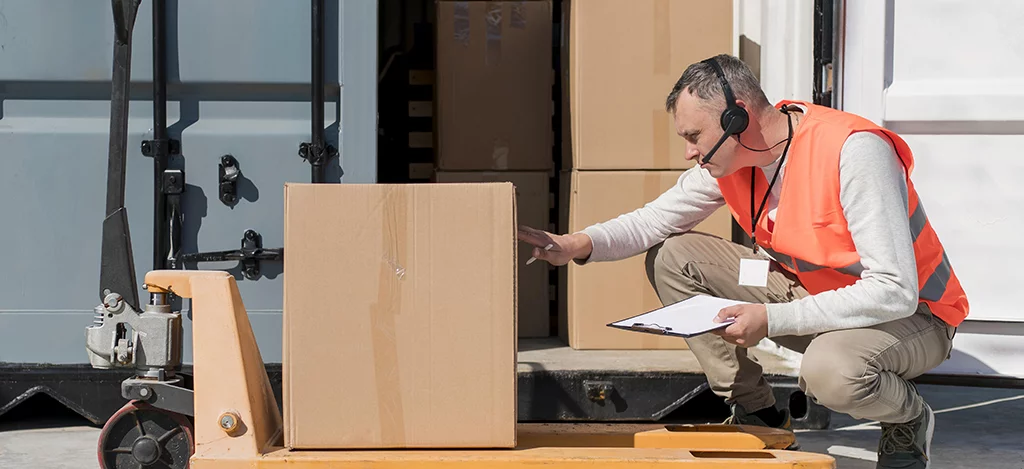What are the Different Freight Classes
Freight classes exist to simplify logistics processes and protect the shipment from damage. In our post, we review different classes of freight and their determination. Check it out!
What are the Different Freight Classes

What are the Different Freight Classes
The freight class helps to establish the transportability of the commodities. Freight class is a standard forced by the National Motor Freight Classification. There are 18 classes ranging from 50 to 500.
Freight classification ensures that the client gets fair service and the right price for transportation. Carriers, in turn, can plan the shipping process and pick the right vehicle for it.
What are the Characteristics That Determine Freight Class
There are four characteristics that help to determine the freight class: density, handling, liability, and stowability. Each transported item has all of the following characteristics, and it is vital to properly indicate them.
- Density. Also can be described as pounds per cubic foot. It shows how much space is needed to store the item inside the truck/trailer. Small and compact things with high density are marked as a lower class, and it is much cheaper to ship them.
- Handling. The easier it is to handle the freight, the lower its class. Fragile items and items that require special care have higher class, and it will cost more to ship them.
- Liability. Stands for the chance of the freight’s theft or damage. Also the possibility of the freight damaging other items. For example, perishable products, freight that can cause explosion or combustion has higher liability and higher transportation cost.
- Stowability. Difficult to load freight, freight with odd shapes, excessively heavy freight is considered to have low stowability. Regular, properly packed parcels are easy to store and handle, thus cheaper to ship.
How to Determine Freight’s Density
Density is measured in pounds per cubic foot. To calculate your freight density, you need to measure its weight and proportions (height, length, and width). Multiply proportions and get the cubic volume of your cargo. Then divide the weight by the volume and get the density.
Freight Class List with NMFC Codes
When you have calculated freight density, you can classify your freight by this parameter. You can use the chart below to do it.
| Freight class code | Type of freight | Weight per ft3 |
| 50 | Durable freight that fits on a standard 4′ × 4′ pallet | 50+ lbs. |
| 55 | Bricks, cement, hardwood flooring, construction materials | 35–50 lbs. |
| 60 | Car accessories, car parts | 30–35 lbs. |
| 65 | Car accessories and parts, boxed books, bottled drinks | 22.5–30 lbs. |
| 70 | Car accessories and parts, auto engines, food items | 15–22.5 lbs. |
| 77.5 | Tires, bathroom fixtures | 13.5–15 lbs. |
| 85 | Crated machinery, cast iron stoves | 12–13.5 lbs. |
| 92.5 | Computers, monitors, refrigerators | 10.5–12 lbs. |
| 100 | Car covers, canvas, boat covers, wine cases, caskets | 9–10.5 lbs. |
| 110 | Cabinets, framed art, table saws | 8–9 lbs. |
| 125 | Small home appliances | 7–8 lbs. |
| 150 | Auto sheet metal, bookcases | 6–7 lbs. |
| 175 | Clothing, couches, stuffed furniture | 5–6 lbs. |
| 200 | Sheet metal parts, aluminum tables, packaged mattresses, aircraft parts | 4–5 lbs. |
| 250 | Mattresses and box springs, plasma TVs, bamboo furniture | 3–4 lbs. |
| 300 | Model boats, assembled chairs, tables, wood cabinets | 2–3 lbs. |
| 400 | Deer antlers | 1–2 lbs. |
| 500 | Gold dust, ping pong balls | <1 lb. |
Quick Freight Class Tips
- You should always tell your freight class to the carrier
- Attach accurate freight description to the BOL
- If you struggle to calculate freight density, you can always use freight class calculators provided by transportation companies
- Do not try to cheat on your freight class. In the end, you’ll end up paying penalties.
Please fill out the form and one of our experts will contact you as soon as possible.
